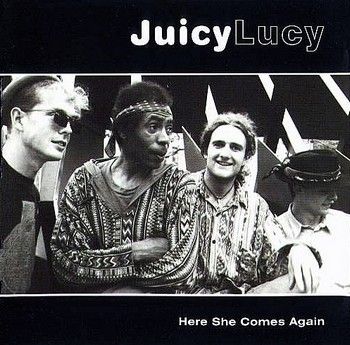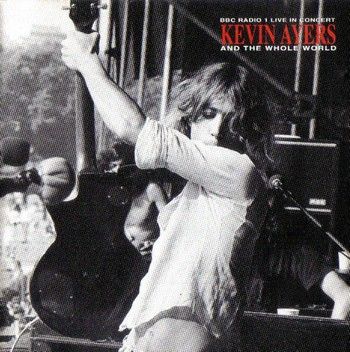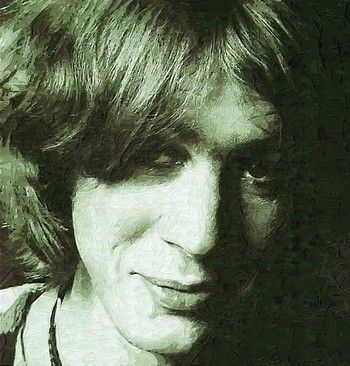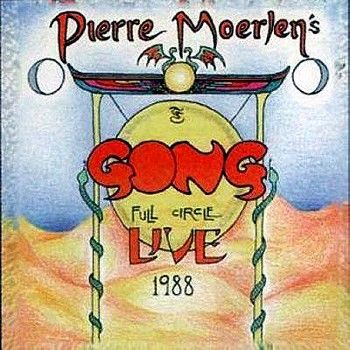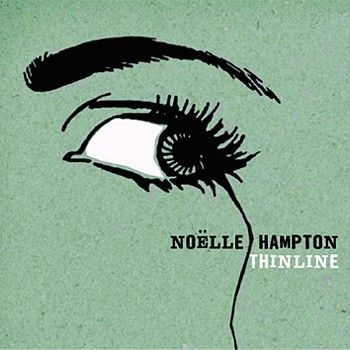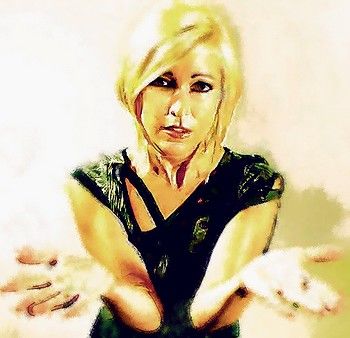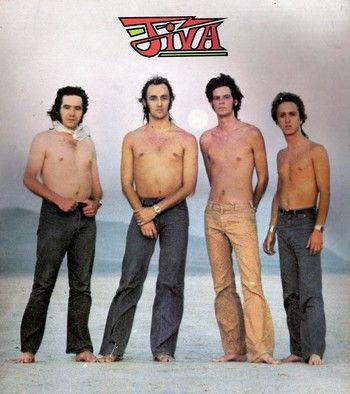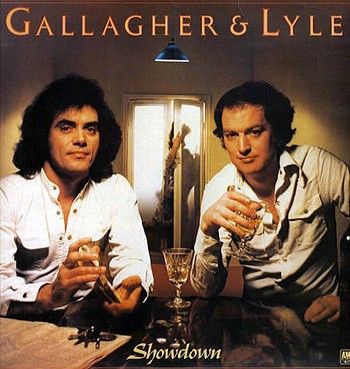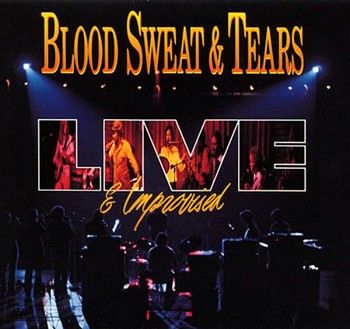
Blood, Sweat & Tears - Live And Improvised - 1991 - Columbia/LegacyThe legendary jazz rock band, Blood, Sweat & Tears was formed in New York in 1967 from of the remnants of the Blues Project , by keyboard player/singer Al Kooper and guitarist Steve Katz of that group and saxophonist Fred Lipsius . The rhythm section consisted of bassist Jim Fielder and drummer Bobby Colomby and the horn section was composed of trumpeters Randy Brecker and Jerry Weiss, and trombonist , Dick Halligan . The band's first album, "Child Is Father To The Man" is now regarded as a masterpiece of jazz rock. The band's self titled album in 1969 with the fabulous vocalist David Clayton-Thomas is another classic album. Many people hold the opinion that these first two albums were never equalled as regards songwriting, and musicianship. The band has played and recorded throughout the last forty years with many different line-ups. Not all of their albums have been successful, even though most of them are good albums. To many people, B,S&T' albums without David Clayton-Thomas' vocals are not regarded as "the real thing". This album was recorded live at: Schaefer Music Festival, New York City, USA on 5 July 1975, City Hall Plaza, Boston, Massachusetts, USA on 20 July 1975, National Arts Center, Ottawa, Ontario, Canada on 11/12 August 1975, and Monterey Jazz Festival, Monterey, California, USA on 21 September 1975. It showcases the band's stupendous talents to great effect. David Clayton-Thomas' vocals are as usual, superb, and musicians include Steve Khan, Mike Stern, and Georg Wadenius on guitars, and Bill Tillman on sax. This album was also released as "Blood, Sweat & Tears In Concert Live" in 1975/1976 on CBS Records. It's a fabulous live album from one of the greatest jazz rock/R&B bands of all time. It is also
V.H.R by A.O.O.F.C. Listen to the band's great "Nuclear Blues" album. The Blood, Sweat & Tears Featuring David Clayton-Thomas' "New City" album is @
DAVCLTH/BS&T/NC You can find the band's "New Blood" album @
BS&T/NB Check out
about B,S&T which describes the bands history, brilliantly, and search this blog for other B,S&T related releases
TRACKS / COMPOSERSCD1 1. Spinning Wheel - David Clayton-Thomas
2. I Love You More Than You'll Ever Know - Al Kooper
3. Lucretia Mac Evil - David Clayton-Thomas
4. And When I Die - Laura Nyro
5. One Room Country Shack - John Lee Hooker
6. And When I Die (Reprise) - Laura Nyro
7. I Can Recall Spain - Al Jarreau, Chick Corea, Artie Maren
CD2
1. Hi-De-Ho "That Old Sweet Roll"- Carole King, Gerry Goffin
2. Unit Seven - Sam Jones
3. Life - Allen Toussaint
4. Mean Ole Worlld - Jerry Lacroix
5. Ride Captain Ride - Skip Konte, Mike Pinera
6. You've Made Me So Very Happy - Berry Gordy, Jr., Patrice Holloway, Brenda Holloway, Frank Wilson
MUSICIANSDavid Clayton-Thomas - Vocals
Steve Khan - Guitar, Backing Vocals (National Arts Center)
Mike Stern - Guitar, Backing Vocals (Monterey Jazz Festival)
Georg Wadenius - Guitar, Backing Vocals (City Hall Plaza, Schaefer Festival)
Ron McClure - Bass
Larry Willis - Keyboards, Backing Vocals
Bobby Colomby - Drums, Backing Vocals
Don Alias - Percussion, Backing Vocals
Bill Tillman - Saxophone, Flute, Backing Vocals
Dave Bargeron - Trombone, Tuba, Percussion, Backing Vocals
Anthony Klatka, Joe Giorgianni - Trumpet, Backing Vocals
REVIEWBlood, Sweat & Tears didn't get around to cutting an official live album until they were well past their prime years -- in this case, 1975, long after every original member (and even most of their first-generation successors) except for drummer Bobby Colomby (a true founding member, going back to the Al Kooper lineup) and vocalist David Clayton-Thomas, was gone. But, as Clayton-Thomas was back for the accompanying album, New City, and was with the group on this tour, one supposes that Columbia Records decided to take advantage of its good fortune by taping several shows. For his part, the singer is more mannered and pretentious than ever on most of this album, his singing powerful enough but his instincts pushing him more toward loud, ultimately over-the-top soul strutting, lacking any hint of subtlety. His performance would be more of a problem, except that members of the group also stretch out for solos on trumpet, flügelhorn, etc., on tracks such as "Unit Seven," and extended versions of "Ride Captain Ride" and other numbers, thus counter-balancing his excesses with their own. What's also lacking is some excitement -- in the group's evident desire to emphasize their jazz side while minimizing any rock elements in their playing, they've also banished any tension, or the interplay between rock and jazz elements upon which their original appeal was founded. Numbers like "Spinning Wheel," "Lucretia MacEvil," "And When I Die," and "I Love You More Than You'll Ever Know" are done in such loose-limbed fashion that, apart from showcasing some virtuoso playing and Clayton-Thomas' more oppressive mannerisms, they're rather weak reinterpretations. It is curious to note, however, that even at this late date, Clayton-Thomas and company were still doing the Al Kooper-era "I Love You More Than You'll Ever Know," and were also still utilizing arrangements by Kooper and co-founder Fred Lipsius. On the positive side, along with the presence of those arrangements, the playing is very good, if not always terribly involving, and in those moments when Clayton-Thomas keeps his instincts in check, the material does recapture and expand on the best components of the original group's sound. This album was part of a small group of live recordings done by Columbia during this period -- Donovan's Live in Japan was another -- that were intended for the European and Japanese markets (in later years, there was also a laser disc of a concert from the same tour issued in Japan), where the group was still considered commercially viable. © Bruce Eder, All Music Guide, www.answers.com/topic/live-and-improvised
BIO (BLOOD, SWEAT & TEARS)
No late-'60s American group ever started with as much musical promise as Blood, Sweat & Tears, or realized their potential more fully -- and then blew it all in a series of internal conflicts and grotesque career moves. It could almost sound funny, talking about a group that sold close to six million records in three years and then squandered all of that momentum. Then again, considering that none of the founding members ever intended to work together, perhaps the group was "lucky" after a fashion. The roots of Blood, Sweat & Tears lay in one weekend of hastily assembled club shows in New York in July 1967. Al Kooper (born February 5, 1944, Brooklyn, NY) was an ex-member of the Blues Project, in need of money and a fresh start in music. He'd been toying with the notion, growing out of his admiration for jazz bandleader Maynard Ferguson, of forming an electric rock band that would use horns as much as guitarists, and jazz as much as rock as the basis for their music. As he later related, he saw the proposed group coming down somewhere midway between James Brown's Famous Flames and the Count Basie Orchestra. Kooper hoped to raise enough cash to get to London (where he would put such a band together) through a series of gigs involving some big-name friends in New York. When the smoke cleared, there wasn't enough to get him to London, but the gig itself produced a core group of players who were interested in working with him: Jim Fielder (born October 4, 1947, Denton, TX), late of Buffalo Springfield, on bass, whom Kooper brought in from California; Kooper's former Blues Project bandmate, guitarist Steve Katz (born May 9, 1945, Brooklyn, NY); and drummer Bobby Colomby (born December 20, 1944, New York, NY), with whom Katz had been hanging out and also talking about starting a group. Kooper agreed, as long as he was in charge musically -- having just come off of the Blues Project, who'd been organized as a complete cooperative and essentially voted themselves out of existence, he was only prepared to throw into another band if he were calling the shots. This became the group that Kooper had visualized; it would have a horn section that would be as out front as Kooper's keyboards or Katz's guitar. Colomby brought in alto saxman Fred Lipsius (born November 19, 1944, New York, NY), a longtime personal idol, and from there the lineup grew, with Randy Brecker (born November 27, 1945, Philadelphia, PA) and Jerry Weiss (born May 1, 1946, New York, NY) joining on trumpets and flügelhorns, and Dick Halligan (born August 29, 1943, Troy, NY) playing trombone. The new group was signed to Columbia Records, and the name Blood, Sweat & Tears came to Kooper in the wake of an after-hours jam at the Cafe au Go Go, where he'd played with a cut on his hand that had left his organ keyboard covered in blood. The original Blood, Sweat & Tears turned out to be one of the greatest groups that the 1960s ever produced. Their sound, in contrast to R&B outfits that merely used horn sections for embellishment and accompaniment, was a true hybrid of rock and jazz, with a strong element of soul as the bonding agent that held it together; Lipsius, Brecker, Weiss, and Halligan didn't just honk along on the choruses, but played complex, detailed arrangements; Katz played guitar solos as well as rhythm accompaniment, and Kooper's keyboards moved to the fore along with his singing. Their sound was bold, and it was all new when Blood, Sweat & Tears debuted on-stage at the Cafe au Go Go in New York in September 1967, opening for Moby Grape. Audiences at the time were just getting used to the psychedelic explosion of the previous spring and summer, but they were bowled over by what they heard -- that first version of Blood, Sweat & Tears had elements of psychedelia in their work, but extended it into realms of jazz, R&B, and soul in ways that had scarcely been heard before in one band. The songs were attractive and challenging, and the arrangements gave room for Lipsius, Brecker, and others to solo as well as play rippling ensemble passages, while Kooper's organ and Katz's guitar swelled in pulsing, shimmering glory. The group's debut album, Child Is Father to the Man, recorded in just two weeks late in 1967 under producer John Simon, was released to positive reviews in February 1968, and it seemed to portend a great future for all concerned. It remained one of the great albums of its decade, right up there with Bob Dylan's Highway 61 Revisited and the Rolling Stones' Beggars Banquet. The only thing it didn't have, which those other albums did, was a hit single to get radio play and help drive sales. Child Is Father to the Man was out there on its own, invisible to AM radio and the vast majority of the public, awaiting word-of-mouth and whatever help the still fledgling rock press could give it, and the band's touring to promote it. Even as their debut was being recorded, however, elements of discontent had manifested themselves within the group that would sabotage their first tour and their future. At first, these were disagreements about repertory, which grew into issues of control, and then doubts about Kooper's ability as a lead singer. With Colomby and Katz taking the lead, the group broached the idea of getting a new vocalist and moving Kooper over exclusively to playing the organ and composing. By the end of March 1968, with Child Is Father to the Man nudging onto the charts and sales edging toward 100,000 copies and some momentum finally building, Blood, Sweat & Tears blew apart -- Kooper left the lineup, taking a producer's job at Columbia Records; at that same point, Randy Brecker announced his intent to quit. Ironically, at around the same time, Jerry Weiss, who'd actually favored Kooper's ouster, also headed for the door as well, to form the group Ambergris?, which lasted long enough to cut one album in 1970. That might've been the end of their story, except that Bobby Colomby and Steve Katz saw the opportunity to pull their own band out of this debacle. Columbia Records decided to stick with them while Katz and Colomby considered several new singers (including Stephen Stills), and actually got as far as auditioning and rehearsing with Laura Nyro before they found David Clayton-Thomas (born David Thomsett, September 13, 1941, Surrey, England). A Canadian national since the age of five, Clayton-Thomas at the time was performing with his own group at a small club in New York. He came aboard, with Halligan moved over to keyboards, Chuck Winfield (born February 5, 1943, Monessen, PA) and Lew Soloff (born February 20, 1944, Brooklyn, NY) on trumpets, and Jerry Hyman (born May 19, 1947, Brooklyn, NY) succeeding Halligan on the trombone. The new nine-member group reflected Colomby and Katz's vision of a band, which was heavily influenced by the Buckinghams, a mid-'60s outfit they'd both admired for its mix of soul influences and their use of horns -- toward that end, they got James William Guercio, who had previously produced the Buckinghams, as producer for their proposed album. Though Kooper was gone from Blood, Sweat & Tears, the group was forced to rely on a number of songs that he'd prepared for the new album. The resulting album, simply called Blood, Sweat & Tears, was issued 11 months after Child Is Father to the Man, in January 1969. Smoother, less challenging, and more traditionally melodic than its predecessor, it was ambitious in an accessible way, starting with its opening track, an adaptation of French expressionist composer Erik Satie's "Trois Gymnopedies" that transformed the languid early 20th century classical work into a pop standard. Clayton-Thomas was the dominant personality, with Lipsius and the other jazzmen in the band getting their spots in the breaks of each song -- equally important, and rather more telling the singles drawn from the album were all edited down, abbreviating or removing most of the featured spots for the jazz players. The first single by the new group, "You've Made Me So Very Happy," quickly rose to the number two spot on the charts and lofted the album to the top of the LP listings as well. That was followed by "Spinning Wheel" b/w "More and More," which also hit number two, which, in turn, was followed by the group's version of Laura Nyro's "And When I Die," another gold-selling single. When the smoke cleared, that one album had yielded a career's worth of hits in the space of six months, and the LP had won the Grammy as Album of the Year, selling three million copies in the bargain. So much demand was created for work by Blood, Sweat & Tears that the now 18-month-old Child Is Father to the Man, with the different singer and very different sound, made the charts anew in the summer and fall of 1969 and earned a gold record. The group soon faced the problem that every act with a massive success has had to confront -- where do you go from up? By fall 1969, with ten months of massive success behind them, the record company was eager for a follow-up album. The group began recording Blood, Sweat & Tears 3 while the second album was still selling many tens of thousands of copies every week. This time, the group would produce the album themselves, an unusual arrangement for what was still essentially a new group, but one the label agreed to, in the wake of the previous album's sales. And then issues of image and politics entered into the picture. When Al Kooper led the group, there was no question of how hip and tuned in Blood, Sweat & Tears were, to the rock culture and the counterculture -- by his own account, Kooper was a resident "freak" wherever he went in those days, and they were a daring enough ensemble to speak for themselves with their music. But the new group's music, and their use of horns, in particular, was more traditional, and it made them a little suspect among rock listeners. "Spinning Wheel," especially, was the kind of song that invited covers by the likes of Mel Tormé and Sammy Davis, Jr., and was the sort of "rock" hit that your parents didn't mind hearing. And "You've Made Me So Very Happy," for all of the soulfulness of David Clayton-Thomas' singing, also had a kind of jaunty pop-band edge that made the group seem closer in spirit to the Tonight Show band than, say, to the Rolling Stones. Compounding the uncertainty of just who and what Blood, Sweat & Tears were, and how cool they were, was a decision that they made in early 1970, to undertake a tour of Eastern Europe on behalf of the U.S. State Department. A few other rock bands had played Eastern Europe before, but never on behalf of a government, much less one that, at that particular time, was singularly unpopular with a lot of Blood, Sweat & Tears' potential fan base over the war in Vietnam. There was something horribly wrong with this picture in May 1970, but the group was oblivious to it. The reason for the tour was a practical one, according to some sources. Clayton-Thomas was a Canadian with very uncertain visa status in the United States, and the State Department indicated that it would be a lot more agreeable about their singer working here if the band did them this favor. It was a coup for the administration, getting one of the hottest rock acts in the world to represent the government in the Eastern bloc nations -- but it also took place just at the time of the Kent State massacre, in which four students were shot to death by National Guardsmen, an event that Nixon chose to capitalize on politically. And it got worse when they came back, after seeing the police in Bucharest, in particular, take a violent hand to any audience spontaneity; a statement was issued on the group's behalf, upon their return, trumpeting the virtues of American freedom -- this, one month after Kent State, with the murders of the students still an open wound and the reactionary rioting that had ensued in cities like New York (where the police had done nothing to stop a mob of construction workers from attacking anyone with long hair and invading City Hall) still fresh in peoples' minds. In June 1970, Blood, Sweat & Tears were the only act hipper than the Johnny Mann Singers putting out feel-good messages about the United States government. It was on their return to America, amid these dubious career moves, that Blood, Sweat & Tears 3 was released. Under the best of conditions, it would have been too much to hope that it could match its predecessor, and the truth was that it didn't. Despite some attractive songs, the album never achieved the same mix of accessibility and inspiration displayed by the earlier album. The album shipped gold and topped the LP charts for two weeks in mid-1970, and the single "Hi-De-Ho" made it to number 14, but the edge was off and the numbers didn't keep soaring week after week as the sales of their prior two LPs had. More troubling, the group was starting to get criticized in the rock press, not directly for their State Department tour -- though that couldn't have made a lot of reviewers and columnists too predisposed to go easy on the band -- but over who and what they were (and that was where the infamous tour did enter into the picture). A lot of rock critics felt that Blood, Sweat & Tears were a pretentious pop group that dabbled in horn riffs, while others argued that they were a jazz outfit trying to pass as a rock band -- either way, they weren't "one of us" or part of who we were. Oddly enough, some members of the jazz press liked them, but that was small help -- at any time after the early '40s, jazz reviewers in America reached no more than a small percentage of listeners. And regardless of what the critics said, a lot of serious jazz listeners who were the same age as the bandmembers thought the group was fluff, jazz-lite. Their image problem grew only worse when the group accepted an engagement to appear at Caesar's Palace in Las Vegas -- the gambling mecca had never been known as friendly to current rock acts, and the group felt it was doing journeyman service by opening up Caesar's Palace to performers under 30. Instead, it multiplied their difficulties -- Vegas and what it represented were almost as bad as Nixon. In the meantime, another act, Chicago, produced by James William Guercio, broke big in 1970, also on the Columbia label, and avoided all of these pitfalls and internal problems and ended up stealing a huge chunk of Blood, Sweat & Tears' audience. It seemed as though, after an extraordinary run of luck, the group couldn't catch a break; their musical contribution to the Barbra Streisand film The Owl and the Pussycat did nothing to enhance their image. The group's fourth album, begun in early 1971, was the first that ran into real trouble in the making, which showed from the presence of three producers in the credits, and even Kooper was represented in the songwriting and arranging department. The fourth album, issued in June 1971, peaked at number ten on the charts, nowhere near the top, and none of its singles cracked the Top 30. It was around this time that the membership began shifting and splintering. By 1971, the group was basically divided into three factions, the rock rhythm section pitted against the jazz players, and the singer between them both, and no one happy with what anyone else was doing. Clayton-Thomas no longer enjoyed working with the rest of the band and chose to exit after the release of the fourth album to pursue a solo career. Despite this loss, the group carried on, and the label was willing to carry them a bit longer -- after all, Blood, Sweat & Tears had sold a lifetime's worth of LPs, and the two subsequent albums, though disappointing in its wake, were respectable successes by any conventional standard, and one always hopes that lightning will strike twice. Bob Doyle took the vocalist spot for a few months, and was then replaced by Jerry Fisher; elsewhere in the lineup, Fred Lipsius, who'd been there from the start and had put the original horn section together, finally called it quits and was replaced by Joe Henderson, who, in turn, was succeeded by Lou Marini, Jr., and Dick Halligan, who'd replaced Kooper on keyboards after the first band's breakup, was succeeded by Larry Willis, while Steve Katz got a second guitarist to play off of in the person of George Wadenius. All of these personnel changes led to an extended period of inactivity for the band, which Columbia Records made up for by releasing Blood, Sweat & Tears' Greatest Hits in 1972 -- this was probably a little sooner than they might otherwise have done it, under ideal circumstances, but the album became a Top 20 album and earned a gold record award and was a very popular catalog item for many years; one advantage that its original LP version offered the casual fan was that its songs were all the shorter, single edits of their hits, which were otherwise only available on the original 45 rpm records. In September 1972, this lineup released an album, appropriately enough called New Blood, which never made the Top 30 despite some good moments, accompanied by a single, "So Long Dixie," which didn't crack the Top 40. By this time, they'd turned more toward jazz, recognizing that the rock audience was slowly drifting out of their reach. Founding members Jim Fielder and Steve Katz called it quits during this period, Katz preferring to work in the more rock-oriented orbit of Lou Reed. With replacements aboard, Blood, Sweat & Tears continued performing, but their next LP, humorously (or was it ominously?) entitled No Sweat, released in 1973, never rose higher than number 72 on the charts, and that was a hit compared to its successor, Mirror Image, which peaked at number 149. By this time, people were passing through the lineup like a revolving door, and even Jaco Pastorius put in some time playing bass for the group, all without leaving much of an impression on the public. The plug might've been pulled right about here, but for the return of Clayton-Thomas, whose solo career had fizzled. Now fronting an outfit billed officially as Blood, Sweat & Tears Featuring David Clayton-Thomas, they released a modestly successful comeback album, New City, in 1975, which -- despite a few lapses in creativity and taste, and a range that encompassed Allen Toussant ("Life") and Randy Newman ("Naked Man," complete with a Mozartian digression) -- featured some of the group's best jazz sides in years as well as superb performances by Clayton-Thomas. The latter included a rare venture (for this group) into acoustic guitar blues on their rendition of John Lee Hooker's "One Room Country Shack." The accompanying single, a version of the Beatles' "Got to Get You Into My Life" (which, peculiarly enough, anticipated the single release of a remixed version of the British band's own recording) never made the Top 40, but the album did well enough to justify an ambitious tour that yielded a double-LP concert album, Live and Improvised, that was issued in Europe (and, 15 years later, in America). Columbia Records dropped the group in 1976, and a brief association with ABC Records led nowhere. The group was caught between their former Columbia rivals Chicago, who continued to get airplay and chart regularly with new releases, and purer jazz ensembles such as Return to Forever and Weather Report, who had captured the moment in the press and before the public. In the end, even Bobby Colomby, who had trademarked the group's name very early after Kooper's exit in 1968, gave up playing in the band, taking a corporate position at Columbia. Clayton-Thomas has kept the band alive in the decades since, fronting various lineups that continue to perform regularly and record sporadically, mostly updated renditions of their classic material. The advent of the CD era, and the release of expanded versions of their first two albums, fostered new interest in the group's early history, which was furthered by the 1990s release of Kooper's Soul of a Man, which presented new concert renditions of the 1967-era group's repertory. During the first decade of the 21st century, Wounded Bird Records also belatedly reissued the band's post-BST4 albums on CD, with surprising success -- New Blood and, even more so, New City, sounded quite good musically, divorced from their origins by almost 30 years. The group name remains alive behind Clayton-Thomas, and their recordings through 1972 -- especially the first album -- still elicit a powerful response from those millions who've heard them. © Bruce Eder, All Music Guide
